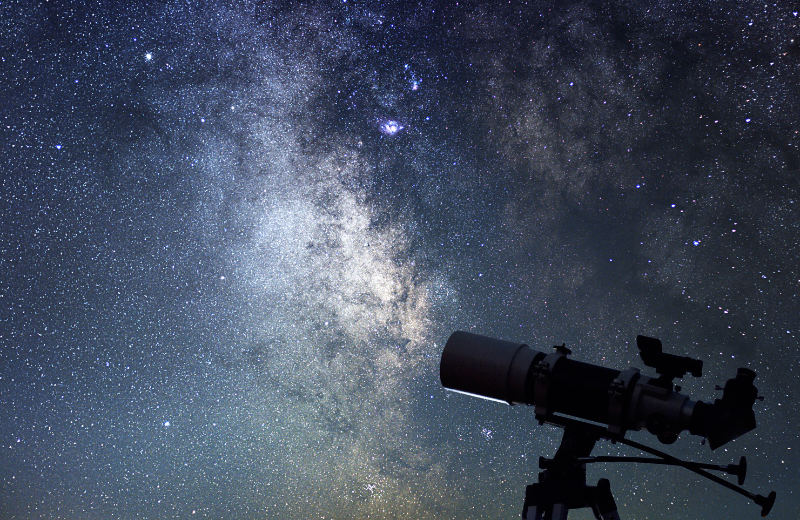One lesser-known yet intriguing constellation is Caelum, a small, chisel-shaped cluster in the southern hemisphere. This guide shares the story, structure, and unique features of this fascinating constellation.
Jump to:
Recommended for you!
Best SellersWhat is the Caelum Constellation?
The Caelum constellation is one of the 88 recognised constellations in the night sky. It’s located in the southern hemisphere and is one of the smaller constellations, making it a challenge to spot without a bit of guidance.
The Definition of Caelum
The name "Caelum" comes from the Latin word meaning "chisel" or "engraving tool." Astronomically, the constellation symbolises a sculptor’s chisel, reflecting its association with precision and craftsmanship. The constellation was named by the French astronomer Nicolas Louis de Lacaille in the 18th century.
How is Caelum Pronounced?
If you’re wondering how to say "Caelum," it’s pronounced as “SEE-lum,” similar to the word "seal."
What Does Caelum Look Like?

Caelum isn’t the most visually striking constellation. It doesn’t boast any bright, easily recognisable stars. In fact, the brightest star in Caelum is relatively dim, shining at a magnitude of only about 4.45. Because of this, it’s often overlooked by casual stargazers.
How Far is the Caelum Constellation from Earth?
The Caelum constellation itself isn't a specific distance from Earth since it comprises numerous stars spread out across light-years. However, to give you an idea, some of Caelum’s stars are hundreds of light-years away. The constellation is relatively close in cosmic terms compared to more distant galaxies or celestial phenomena.
The Caelum Constellation Myth
Unlike many of the more prominent constellations, Caelum doesn’t have a mythological background rooted in ancient Greek or Roman tales. It was created and named during the 18th century, a period when many new constellations were added to celestial maps to fill gaps in the night sky. The idea was to honour tools and instruments that represented human ingenuity, and Caelum, symbolising a sculptor’s chisel, fits that theme.
Caelum's Stars

The Caelum constellation, while not boasting particularly bright stars, does have some notable ones that add to its subtle charm.
- Alpha Caeli – This is the brightest star in Caelum, although it shines with only modest brightness compared to stars in more well-known constellations. Alpha Caeli is a double star system located approximately 65 light-years from Earth. Its dual nature makes it a point of interest for astronomers, even if it doesn't stand out in the night sky.
- Beta Caeli – Another significant star in Caelum is Beta Caeli, a yellow giant located around 90 light-years away. It’s slightly dimmer than Alpha Caeli but adds character to the constellation. Despite being less luminous, Beta Caeli is still worth observing through a telescope to appreciate its position within the constellation.
Nebulae in the Caelum Constellation
While Caelum itself doesn’t contain any prominent nebulae, it sits in a part of the sky near various intriguing deep-sky objects in neighbouring constellations. This makes it a fun region for more experienced stargazers who enjoy exploring the wonders of the universe through telescopes.
Finding Caelum in the Sky

Caelum is best viewed during the summer months in the southern hemisphere, with its peak visibility occurring in January. During this time, the constellation rises higher in the sky, making it a bit easier to observe. However, because Caelum is one of the fainter constellations, you’ll need ideal conditions to spot it.
Locating Caelum
To locate Caelum, start by identifying its neighbouring constellations for reference:
- Look Near Columba and Eridanus: Caelum sits close to the constellations Columba and Eridanus. If you can find these constellations first, it will help guide you to the small, faint stars of Caelum.
- Use a Star Map or Stargazing App: Given Caelum’s subtle presence, having a star map or a reliable stargazing app on hand can make a significant difference. These tools will help pinpoint its location in the night sky more accurately.
Viewing Caelum with Binoculars or a Telescope
- With Binoculars: Using binoculars can help make Caelum’s stars clearer, especially if you are observing from a location with some light pollution. The binoculars will help bring out the fainter stars that are otherwise hard to see.
- With a Telescope: A telescope provides a more detailed view of Caelum’s stars, allowing you to appreciate the subtle structure of this small constellation. It’s especially rewarding to use a telescope if you’re interested in exploring the double stars or other celestial features near Caelum.
Best Viewing Conditions
For the best chance of spotting Caelum, find a dark location far from city lights on a clear, moonless night. The absence of artificial light will allow the stars to shine brighter, making this faint constellation easier to detect. With patience and the right conditions, you’ll be able to see Caelum as it was observed by early astronomers.
Recommended for you!
Best SellersFun Facts About Caelum
- Caelum is the eighth smallest constellation in the night sky, covering an area of only 125 square degrees.
- It doesn’t contain any Messier objects or particularly bright stars, which makes it more of a challenge to observe.
- The constellation’s stars are not easily visible to the naked eye unless you are under very dark skies, away from city lights.
- Despite its faintness, Caelum has a few stars of interest to astronomers, particularly for studying stellar characteristics.
Study Astronomy for £29
If you’re intrigued by constellations like Caelum and want to learn more about the wonders of the universe, why not take your curiosity to the next level with our Astronomy Diploma Course? This course offers a detailed understanding of the universe, from constellations and star types to the fundamentals of space observation. Perfect for all budding astronomers, the course is available for a discounted price of £29.













